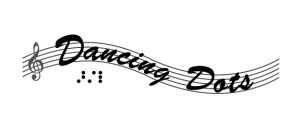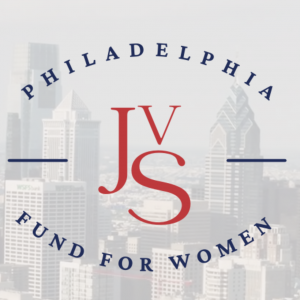Q&A with William R. McCann of Dancing Dots Braille Music Technology
Keystone Edge | Susan L. Pena | July 31, 2014
William R. McCann is a professionally trained trumpeter with a degree in music from University of the Arts in Philadelphia; he graduated cum laude in 1980. He also holds a certificate in computer science from the University of Pennsylvania (1982), and served as a human resourcessystems analyst for theSun Company from 1982 to 1991.
McCann also happens to be blind. He knows better than anyone how important technology is to helping those who are either blind or have low vision achieve their best in the world of music.
His company, Dancing Dots, quickly creates music that blind musicians can read and alsohelps them record their own music independently. They also have a product that maximizes the ability of low-vision musicians to read music.
Dancing Dots is a small company, but its reach is vast: Musicians across the United States and in 50 other countries use their services.
What inspired you to start Dancing Dots?
Necessity is the mother of invention. I’ve been studying music since I was a little kid, and as a blind musician I learned Braille music, but I always had a lot of difficulty getting materials in a timely way.
Before our software, it was a completely manual effort. I would send print scores to a sighted volunteer who was trained in Braille music transcription and they would manually create a Braille score by looking at the print and using a Braille mechanical device to create an embossed Braille score. It’s slow, and if they got halfway down the page and made a mistake they couldn’t fix, they’d have to start again. I would mail the stuff (from 1967 when I started trumpet lessons at 9 to 1980), or drop it off to these wonderful volunteers. Since they were usually part-time volunteers, it might be a week, a month or more until I’d get it. It might be after the lesson or the competition I needed it for.
I wanted to make a system that would allow anyone who could read print music to input the information onto a computer and they would see it in print music. Once the screen agrees with the original, they could just click and launch our Braille software, which would apply the rules of Braille music transcription, and create a score that I could study.
The advantage of using Braille music is that you’re not memorizing the sound of someone else looking at the page and deciding what’s important. The Braille system tells me all the details — tempo, phrasing, dynamics — not just the notes and rhythms.
The Braille system was created by Louis Braille, who was blind and played organ and cello. At 20, in 1829, he published a system for text, arithmetic and music… He is my hero; he gave everybody such a gift.
How has your company developed over the years?
I wrote a very simple prototype of the software in 1992. My business partner, Albert Milani, was brought in to commercialize it. Two other programmers contributed to the software. We released the first product, GOODFEEL, in 1997. We’re up to version 3.2 now, and we have users throughout this country and in more than 50 other countries. The software is in English, and some components are now in Spanish and German. We’re working with partners around the world to get some other languages going.
Then we connected with a gifted software developer, David Pinto, who wrote software to give blind people access to audio production software called SONAR, made by a company in Boston called Cakewalk. David’s product is called Cake Talking for SONAR.
That [software] has enabled lots of blind people around the world to convert their computers into multi-track recording studios. It allows someone using screen-reading software called Jaws to interact with SONAR.
Musicians can use this to make CDs that they sell at their gigs, or upload [the product] to online services like iTunes or CD Baby. We released this product in 1999.
The latest thing we did was adapt our notation software for blind people so it could help people with low vision. Lime Lighter can magnify standard music up to 10 times, and the user can scroll the music on a screen by pressing on a pedal [that way they can] keep their hands on their instrument.
That has been our fastest-growing area. I connected with Dr. Lippold Haken, (a professor of electrical and computer engineering at the University of Illinois), who helped create Lime Lighter.
We also publish books and do lots of training. Most of the books are method books on how to read Braille music. We resell many products like keyboards and screen readers.
Did you take advantage of any resources to get the company off the ground?
Ben Franklin Technology Partners of Southeastern Pennsylvania provided our first round of funding in 1992, and then a few years later we got a second round from them.
The main thing was the Small Business Innovation Research program (SBIR). We competed for and won a lot of those [awards] over the years. There was a Phase 1 and Phase 2 in 1993 and 1994 that enabled me to hire Albert [Milani] and commercialize the prototype.
We’ve had SBIR grants from the U.S. Department of Education, from the National Science Foundation and one from the National Institutes of Health.
That’s been major for us.
What was the biggest challenge so far?
Finding the first bit of money and persuading someone besides myself that this was actually possible — that there really is a market, as much of a niche as it is, and there really is a need throughout our country and around the world.
How have people benefited from your technology?
We have one kid in Florida who took his Lime Lighter onstage and played in a concert. He was reading music for the first time with the other students.
We have one customer who teaches harpsichord at the Trinity College of Music in London. He has told me that he couldn’t have kept his job in the last 10 to 15 years without our software because he has so many students, and they’re all sighted. When they need to learn something quickly, he can get the music and teach them.
We have a lot of advanced high school and college students who use our software to do their music theory homework.
We have people who produce their own records without having to pay somebody in a studio by the hour to do it.
What’s the big differentiator for Dancing Dots?
There have been companies in other countries that have come and gone, who were trying to develop something like what we have done. There’s a project in Europe now that sells software that does parts of what we do. But we’re the only solution that totally integrates print, Braille music, the music cues and the verbal description of each element. I can read scores with it, and I can write scores with it. I can type or play notes, and print them in regular print or in Braille.
What’s next for the company?
I’m always working on something new, but I can’t talk about it yet. We are working on a new version of Lime Lighter that lets you scroll the music automatically instead of using the pedal. It also integrates some touch-screen features to navigate the score.




